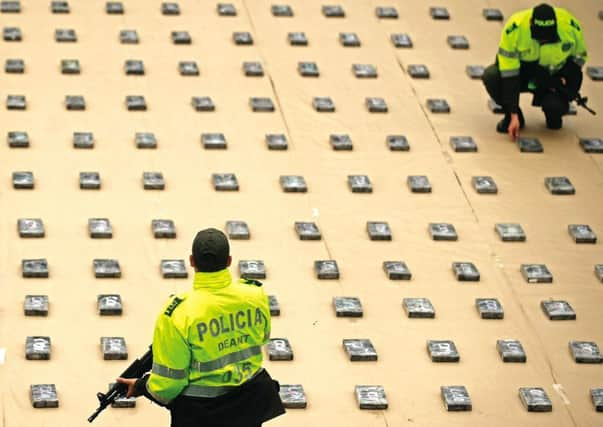Scots drug use ruins Colombian landscape


Researchers from the Royal Botanic Garden Edinburgh (RBGE) are using a new live show to highlight the impact of cocaine use on the people and landscapes of Colombia, the world’s top exporter of the class-A drug and one of the most biologically diverse countries on the planet.
Scotland has the dubious honour of having the highest level of adults using cocaine in the world, according to recent United Nations drug reports.
Advertisement
Hide AdAdvertisement
Hide AdNow the ecologists, who are leading a botanical research project in Colombia, are spearheading a drive to show “consumers” the true consequences of snorting the white stuff.
Despite its relatively small size, Colombia is home to around 10 per cent of all the plants and animals on Earth, as well as more than 60 indigenous peoples.
It is also notorious for supplying 80 per cent of the world’s cocaine, producing more than 600 tonnes in an industry employing around 67,000 households.
Coca cultivation was estimated to account for 3 per cent of Colombia’s GDP from the agricultural sector in 2012.
Native tribes are permitted to use coca leaves in sacred rituals and traditional medicine, but the government there is losing the battle against illegal plantations due to massive global demand for cocaine.
In an effort to avoid detection, unauthorised growers are retreating ever deeper into protected areas of the rainforest, clearing valuable plants and animals and laying landmines in their wake. When government forces eventually track down and destroy the crops, operations are moved to new areas.
“The international drugs trade and social unrest may not obviously spring to mind as day-to-day concerns for a botanical research institute, yet they are pivotal in the race to protect one of the world’s most important biodiversity hotspots,” according to Dr James Richardson, head of tropical biogeography and evolution at RBGE and leader of its Colombian research project.
“But research alone is not enough. Action is required.”
Recent studies indicate that illegal drugs are now cheaper and purer globally than at any time over the past 20 years, suggesting the war on drugs has so far failed.
Advertisement
Hide AdAdvertisement
Hide AdRichardson said: “The demand for cocaine and the illicit trade of the product has enormous social impact in Colombia: funding armed groups, causing forced displacement and fuelling violence and corruption. We need to alert those who believe no harm is done indulging in the drug that over 2.2 million hectares of forest have already been destroyed for production of the coca plant.
“By turning their backs on any invitation to take cocaine, ordinary Scots can help stop the destruction. Personal choices we make here can impact the quality of life of people in Colombia. That could be a small but vital step forward for biodiversity conservation.”
The current government has been conducting peace talks with the left-wing guerrilla group FARC (Revolutionary Armed Forces of Colombia) for around 18 months. One aspect of the talks is a joint plan to tackle the drugs trade.
But now the peace plan is hanging in the balance as the country awaits the outcome of the presidential election, which is set for a second round on 15 June.
The discussion-based show, Cocaine: Between White Lines, is being held as part of the Edinburgh Festival Fringe in August, and will be hosted by Edinburgh comedian Susan Morrison. Also taking part are two Colombian students on a four-year PhD study programme at RBGE and the University of Edinburgh.
Maria Fernanda Torres, 25, from University of the Andes in the capital Bogota, said: “Being in the field, seeing the effects of cocaine production, it’s impossible not to be touched by that.
“Colombia is not the biggest consumer of cocaine – here is. If you can’t stop demand for the product, you can’t stop its production.”
Julieth Serrano, 30, from Bogota’s District University, said: “People who take the drug often think of themselves as very environmentally friendly, but they don’t think about the effects their actions have on the place it comes from. This is a good way to get to them.”